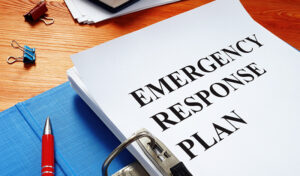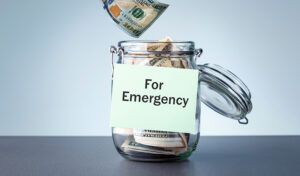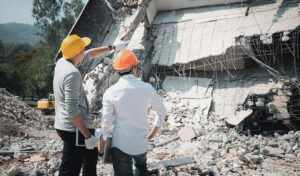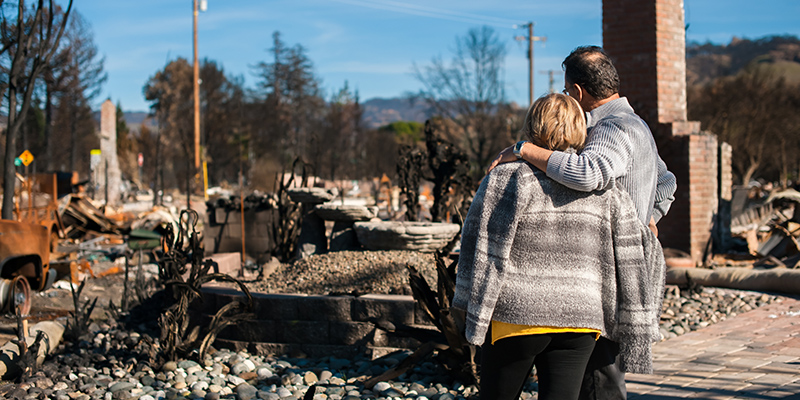HOA disaster management is a vital part of running a community. The board has to create an emergency plan in case natural disasters or calamities strike. Doing so can help the community navigate the aftermath and quickly get back on its feet.
How to Create an HOA Disaster Management Plan
Natural disasters come and go every year. They can come in small calamities like thunderstorms or larger ones like tornadoes and blazing wildfires.
The most common ones in the United States come in the form of severe thunderstorms. However, certain parts of the country are more prone to specific disasters than others. For example, Alaska has seen the strongest earthquakes from the 1970s to the early 2000s.
Regardless of which calamities are more likely to hit your location, they are nearly impossible to prevent. Nonetheless, there are ways HOAs can prepare for them. Here’s how to prepare for natural disasters in HOA communities and what to do when they strike.
1. Identify Potential Disasters
Part of your HOA emergency preparedness plan should be identifying potential disasters. This means assessing what kind of emergencies will likely impact your community based on location.
For instance, if the HOA is located in a wildfire-prone area, the community must specifically have an HOA disaster management plan for wildfires. Meanwhile, locations prone to hurricanes should have an HOA hurricane preparedness plan.
On the other hand, this doesn’t mean homeowners associations should not create plans for rarer disasters. They should still plan for threats that are less common but still possible. For example, HOAs should also prepare for pandemics or terrorist attacks. While these disasters don’t always happen, the community won’t be left completely vulnerable in case they do.
2. Consider the Community’s Age and Languages
Some communities primarily comprise young families, while others have more elderly members. Remember to consider the age and demographic of the community members and factor them into the community disaster plan. For example, if the community mostly comprises older people, it’s best to think about mobility and accessibility issues.
Apart from this, it’s vital to consider the languages the community speaks. If the community is diverse, the HOA should consider publishing the HOA disaster management plan in different languages.
3. Create an Emergency Plan
 Once the community has identified the potential threats, the HOA board should create various disaster emergency plans. It should contain all the necessary plans, including evacuation, recovery, and insurance policies.
Once the community has identified the potential threats, the HOA board should create various disaster emergency plans. It should contain all the necessary plans, including evacuation, recovery, and insurance policies.
Moreover, the board members should clearly outline their responsibilities during the emergency. This will allow all the residents to understand the board’s role during a disaster. It should also help the community understand what to do before, during, and after the calamity.
4. Communicate the Plan to the Members
The community members must be aware of the HOA’s disaster management plan. Otherwise, the residents may not know what to do during an emergency.
To do this, the board should organize meetings to educate the members. They should also disseminate the information through the HOA website and newsletter. They can also send them emergency plans through email or post them on social media.
Additionally, larger communities with ample funds may consider using electronic emergency alert systems. These systems can send emergency texts and emails to residents about emergencies. This keeps residents informed of emergencies as they happen. Just make sure to keep the contact list updated.
5. Inspect the HOA
Disasters might not be preventable, but the degree of property damage can be mitigated. The HOA must regularly inspect the association’s equipment and common areas to ensure they’re in proper working condition. Doing so can minimize injury and further damage.
Moreover, doing this due diligence allows the HOA to reduce legal liability. Many homeowners file lawsuits against their homeowners association on the grounds of negligence. However, they may be unable to accuse the HOA if the board regularly conducts community inspections.
6. Plan for Repairs
Natural disasters bring damage to community common areas and equipment. The HOA must be prepared to shoulder the cost of repairs, reconstruction, and replacements. The board must conduct a proper reserve study and ensure the reserves are well funded. This reduces the community’s financial burden and limits unwanted special assessments.
7. Build a Budget
 Emergencies cost a lot in repairs and replacement projects. Therefore, the board should set aside funds as part of the community budget to account for potential disasters. Moreover, the board should answer a few key questions related to budgeting, including:
Emergencies cost a lot in repairs and replacement projects. Therefore, the board should set aside funds as part of the community budget to account for potential disasters. Moreover, the board should answer a few key questions related to budgeting, including:
- When should the HOA provide financial assistance to its members?
- Do the HOA fees cover community amenity repairs and replacements?
- What is the repair and replacement process after a disaster?
- How will the HOA earn enough money to cover the emergency budget?
- Which items should the HOA prioritize during an emergency?
What to Include in an HOA Emergency Plan
An HOA disaster management plan can be difficult to create. There are too many things to prepare for and write down. However, there are some key issues that every HOA must address and include in their emergency plan.
1. Emergency Contact List
Every homeowners association should have a list of contacts for emergencies. This helps the residents know who to call during certain situations. Consider including the following:
- HOA point persons, including the HOA manager, board members, and maintenance staff
- Local authorities
- Nearby medical facilities
- CERTs or community emergency response teams
- Vendors
- HOA attorneys or law firm representatives
- Insurance agents
- Homeowner emergency contact information
Make sure to include their mobile and landline numbers. The HOA should also include alternative communication methods if there is no reception during the emergency. For instance, the board can also include information about communicating with handheld radios.
2. Area Maps
The residents of an HOA should know where to head in case of emergency. Thus, including a map of the area and highlighting designated meeting places is vital.
The board can also consult local authorities to identify the safest meeting places. Moreover, the HOA should include where to find shut-off points for electricity, water, and gas to prevent further injury and destruction.
3. Evacuation Plan
Each HOA disaster management plan must include an evacuation plan. It should include specific directions and conditions wherein an evacuation is necessary. The plan should include nearby shelters, stores, and generator-powered gas stations. Moreover, they should outline how HOA members will be accounted for.
4. Recovery and Response Plans
 Once it’s safe, the HOA should assess the damage to the community as soon as possible. As such, the community must plan how to recover and rebuild the neighborhood.
Once it’s safe, the HOA should assess the damage to the community as soon as possible. As such, the community must plan how to recover and rebuild the neighborhood.
The HOA must have plans for displaced residents. Moreover, it must indicate when and how residents can enter damaged homes to salvage their valuables. The HOA must also outline the professional inspections required for residents to return home.
Finally, the association must have arrangements with partner engineers, contractors, vendors, and architects to help the community rebuild. They should also be in contact with a professional debris management company to clear scattered objects.
5. Insurance Policies
Any responsible HOA board will have the proper insurance policies to help the community rebuild after a disaster. This reduces the community’s financial burden when the HOA needs major repairs.
Remember to check the community’s insurance policies and ensure they’re updated. Keep a copy of them securely or reproduce them digitally for safekeeping. Moreover, remember to write down the claiming process so the HOA can file insurance claims quickly.
Don’t Neglect Emergency Planning
Calamities can strike at any time. They do not care about what an HOA is going through physically or financially. Hence, it’s best to stay prepared and draft an HOA disaster management plan before things get ugly.
It can be hard for the board to prepare for disasters and juggle community responsibilities. Why not consider HOA management software like Condo Manager to lift some of the burden? Call us today at (800) 626-1267 or contact us online to schedule a demo!
RELATED ARTICLES:
- Crime Prevention In HOAs: Keeping The Neighborhood Safe
- There’s More To Putting Up HOA Fences That Homeowners Know
- What Is Encroachment In HOA Communities? How To Resolve This Issue?



